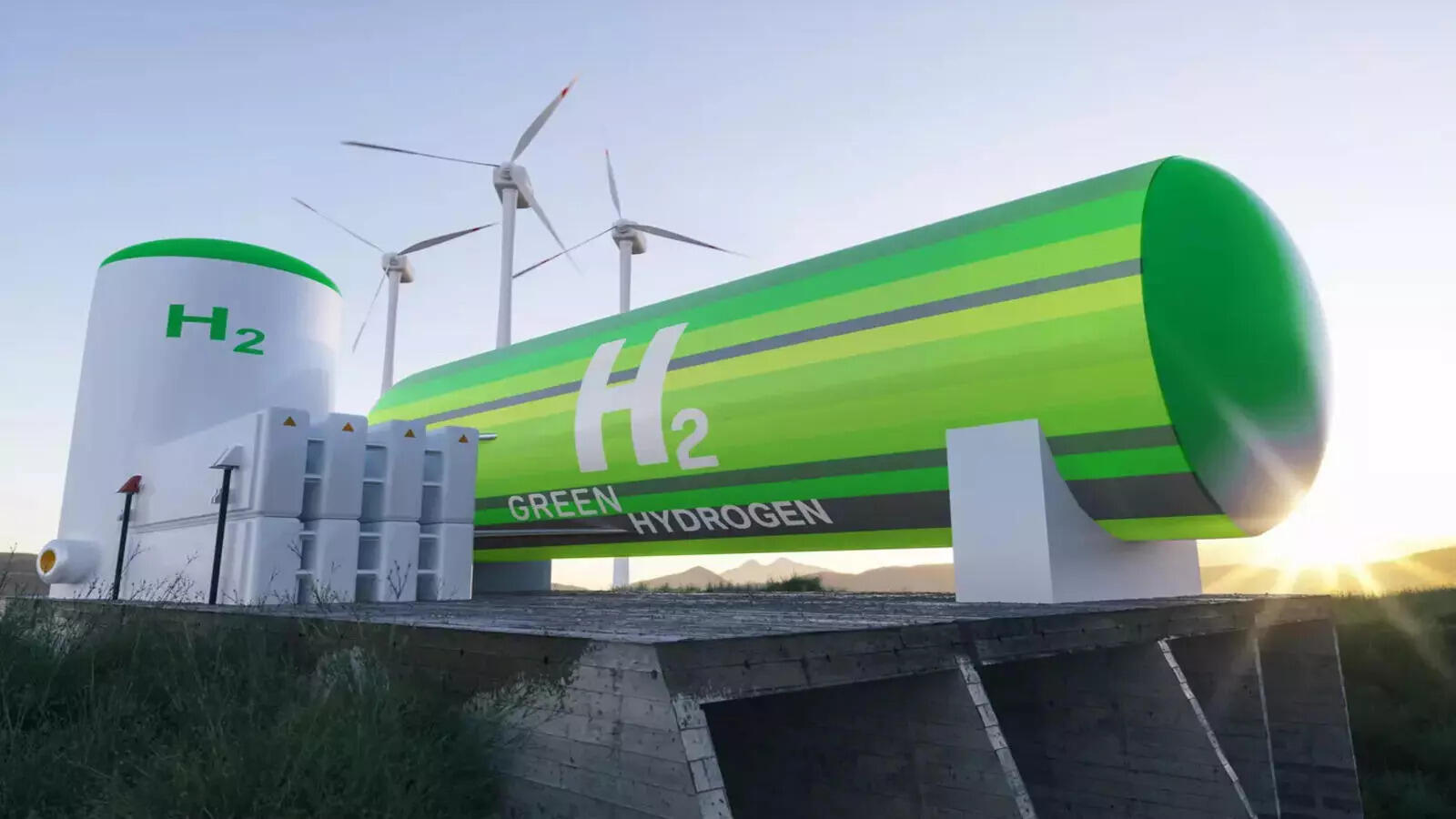
New Delhi: In India, Green Hydrogen is quickly emerging as the strongest response to the decarbonisation challenge as its production and supply can save 830 million tonnes of CO2 emissions annually, compared to hydrogen derived from fossil fuels. But the significance of this clean energy technology extends beyond the immediate environmental impact.
If production costs can be halved by 2030, green hydrogen could emerge as a fuel of the future. Its ease of storage also allows for flexible usage. Beyond its environmental benefits, green hydrogen fosters energy independence by reducing reliance on finite fossil fuels and mitigating supply fluctuations. According to the International Renewable Energy Agency (IRENA), the green sector employed 11 million people in 2018, with projections of over 42 million jobs by 2050, highlighting its potential to create new industries and jobs.
Industries as drivers of future demand
In India, the push towards green hydrogen is increasingly driven by its vast industrial sector, with significant implications for both domestic utility and international trade. Industries such as steel and fertilizer production are pivotal, as these sectors are under pressure to reduce carbon emissions and enhance sustainability through innovative technologies like green hydrogen.
Recognizing this, Indian companies are not only planning to use green hydrogen to meet their own energy needs but are also looking to export it, primarily in the form of green ammonia. This derivative, easier to transport than gaseous hydrogen, offers a practical solution for long-distance energy trade.
The strategic location of hydrogen production facilities along India’s coastline — in states like Odisha, Maharashtra, and Gujarat — facilitates this export-oriented approach. These facilities are advantageously near port infrastructure, simplifying the logistics of international trade while serving sizable domestic markets within the same geographic regions. This dual focus supports India’s broader energy independence goals and integrates with global hydrogen supply chains.
Technological partnerships and global collaboration: Expanding capabilities
To surmount the inherent technological challenges and scale production, India is proactively forging international partnerships. Collaborations with tech leaders from Japan, Europe, and Australia are pivotal, as these regions lead in hydrogen technology. These partnerships are not just about importing technology but are geared towards creating long-term relationships that will evolve with technological advancements and shifting market needs. This strategy ensures that Indian projects remain at the cutting edge of hydrogen technology and can quickly adapt to new efficiencies and methods as they arise.
Such international cooperation extends beyond technology transfer. It involves collaborative efforts in research and development, policy formulation, and even environmental management, making it a comprehensive approach to tackling the multifaceted challenges of green hydrogen production. Indian companies are increasingly seeking funding bundled with techology transfer for their projects from partners overseas, experts say.
Green hydrogen initiatives
The Bureau of Energy Efficiency (BEE), under the Union Ministry of Power, has been appointed as the nodal authority for accrediting agencies responsible for monitoring, verifying, and certifying green hydrogen projects. This institutional support has paved the way for several significant initiatives across the country.
Oil India Limited (OIL) recently commissioned India’s first 99% pure green hydrogen plant in Jorhat, Assam, marking a milestone in the nation’s green energy journey. NTPC has also initiated green hydrogen blending operations in Surat’s Piped Natural Gas (PNG) network, receiving approval for a 5% blending from the Petroleum and Natural Gas Regulatory Board, with plans to scale up to 20%.
Pune Municipal Corporation has partnered with The Green Billions (TGBL) to convert waste into green hydrogen, demonstrating the potential for waste-to-energy projects. Additionally, the Strategic Clean Energy Partnership (SCEP) aims to mobilize financing and expedite green energy development. In September 2023, the Union Minister of Petroleum & Natural Gas launched India’s inaugural Green Hydrogen Fuel Cell Bus in New Delhi, showcasing green hydrogen’s applications in the transportation sector.
The government has launched several initiatives to support green hydrogen production. The Global Biofuel Alliance seeks to establish global standards for hydrogen from biomass, while the National Hydrogen Mission aims to increase production to 5 million metric tonnes by 2030, meeting 40% of domestic demand. A INR 15,000-crore Production Linked Incentive (PLI) scheme has been proposed for electrolysers, and the Green Hydrogen Mission targets the development of at least 5 million metric tonnes of green hydrogen per annum, along with a renewable energy capacity addition of 125 GW by 2030. The Strategic Hydrogen Innovation Partnership (SHIP) facilitates R&D for green hydrogen production.
Challenges in scaling production
However, the path to ramping up green hydrogen production is fraught with challenges. The global manufacturing capacity for electrolyzers, a critical component in hydrogen production, stands at only 8 GW/year, according to the International Energy Agency (IEA). For India to meet its 2030 target, it would require a monumental increase to between 60-100 GW of electrolyzer capacity, nearly 12 times the current global output.
Resource scarcity poses another significant barrier. The production of hydrogen is mineral-intensive, relying on elements like nickel, platinum, and rare earth metals, which are in limited supply in India. This scarcity is compounded by insufficient domestic processing capabilities, which could stymie the scaling of electrolyzer manufacturing.
Energy requirements
Producing green hydrogen is energy-intensive. An efficient system would need about 39 kWh of electricity to produce one kg of hydrogen, though operational efficiencies typically increase this demand to about 48 kWh per kg. With India’s current renewable energy capacity at 125 GW, and ambitions to expand this to 500 GW, significant investments will be necessary to meet both existing and future energy needs.
The country also faces infrastructural challenges, including the need for improved transmission capacity to facilitate the cross-border exchange of power, which is crucial for the distribution of renewable energy across states.
Environmental impacts and economic viability
The environmental impact of scaling up hydrogen production, particularly concerning water use, poses yet another challenge. Hydrogen production is water-intensive, and with many regions in India already facing severe water stress, the additional demand could exacerbate existing conditions. Addressing this requires careful planning and possibly the integration of technologies like desalination, which themselves require significant energy and infrastructure investments.
Economically, while the potential cost reductions in hydrogen production could make it competitive with traditional energy sources, achieving these reductions depends on technological advancements and the successful implementation of policy measures. The economic viability of green hydrogen also hinges on creating market structures that support its adoption across various sectors, from industrial applications to transportation.
Future prospects and strategic directions
Looking forward, India’s approach to integrating green hydrogen into its energy system is multi-faceted. It involves not only enhancing production capabilities and building out infrastructure but also establishing robust regulatory frameworks and market incentives to encourage adoption. By aligning these elements, India can effectively transition to a low-carbon economy, reducing its dependence on fossil fuels and positioning itself as a leader in the emerging global hydrogen economy.
The road ahead is complex and filled with challenges, but with strategic investments, international partnerships, and a clear focus on sustainability and economic viability, India’s green hydrogen venture holds promising potential for energy transformation, both domestically and globally.

